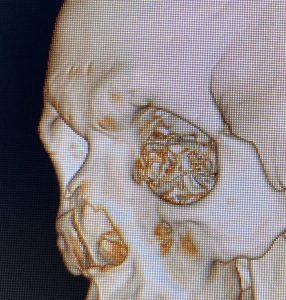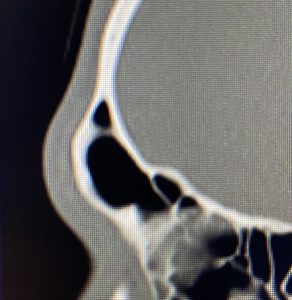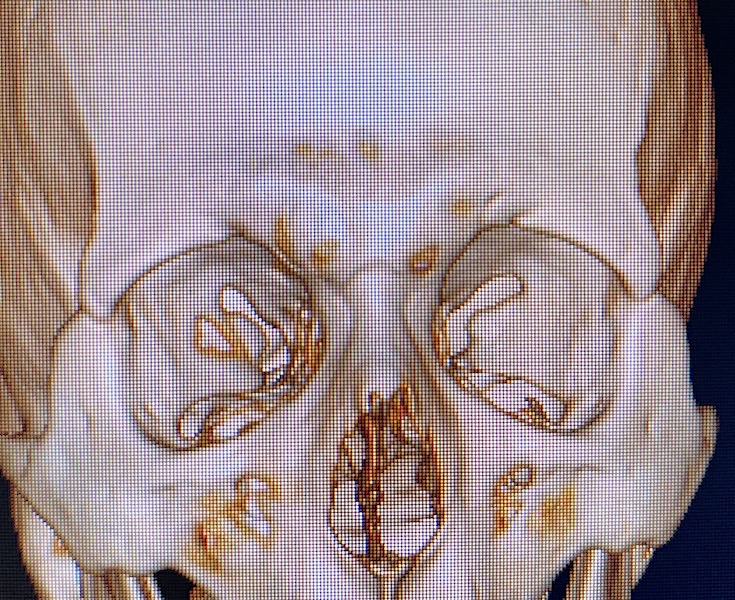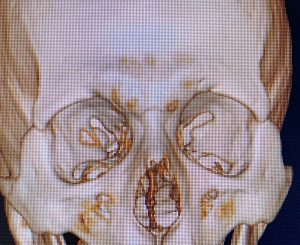Brow bone reduction surgery can be performed by two different methods. The most commonly used technique is a bone flap. This is where the anterior table of the frontal sinus is removed, reshaped and then put back. The other technique is bone burring in which the bone thickness is reduced by shaving. Both methods have their place in the properly selected patient which means how much reduction is needed vs the thickness of the brow bone.
For the sake of clarification brow bone reduction can involve two distinct areas of the brow bone. There are inner and outer brow bone prominences and their anatomy is distinctly different. They can be divided by a vertical line that is taken through the pupil of the eyes. What lies inside this line is the inner brow whose prominence is controlled by the development of the underlying frontal sinus. Larger sinus developments create a stronger brow bone prominence which is what occurs in men vs women. Outside this pupillary line is the outer brow bone which is created by the development of the lower frontal bone. Unlike the inner brow bone it is solid bone.


Thus for reduction of the medial brow bone prominences if just a few millimeters of bone reduction is needed than s shaving technique can be used. But for more significant reductions the bone flap setback technique is needed.
Dr. Barry Eppley
Indianapolis, Indiana




